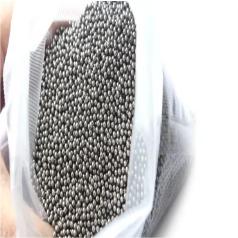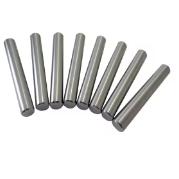Why My Penny Shines: The Metal Behind the Magic
(Why Did You Choose Whichever Metal You Plated Onto The Penny Over The Other Metals?)
Penny metal plating is a fascinating experiment. It turns a simple copper penny into something new. This process involves coating the penny with a different metal. Understanding why we pick specific metals matters. It reveals the science behind the shine. Let’s explore penny metal plating step by step.
1. What Penny Metal Plating Really Means
Penny metal plating is a chemical process. It coats the surface of a copper penny with a thin layer of another metal. This happens through electrochemistry. We use solutions and electricity. The penny acts as one electrode. Another piece of metal acts as the second electrode. When electricity flows, metal ions move. They deposit onto the penny’s surface. This creates a new outer layer. It changes the penny’s appearance completely. Old dull copper becomes shiny silver or gold. The core is still copper underneath. Only the surface changes. This experiment is popular in schools. It teaches basic chemistry principles. It shows how electroplating works. Anyone can try it with simple supplies. You need a penny, some wires, a battery, and a metal salt solution. The result is a transformed coin. It looks like a different metal entirely. That’s the magic of plating.
2. Why Certain Metals Win Over Others
We don’t use just any metal for plating pennies. Some metals work much better than others. Zinc and tin are common choices. Nickel is popular too. Silver is sometimes used. Each metal has specific properties. These properties make them suitable for plating. First, the metal must conduct electricity well. Electricity drives the plating process. Poor conductors won’t work effectively. Second, the metal ions must readily dissolve in water. They need to move freely in the solution. Third, the metal should bond well with copper. Adhesion is crucial. A weak bond causes peeling. Fourth, the metal should offer good corrosion resistance. This keeps the plating looking nice. Fifth, cost and availability matter. Expensive metals like gold are rarely practical for simple experiments. Zinc is cheap and easy to find. Tin is also affordable. Nickel provides a bright finish. Silver gives a high shine but costs more. Safety is another factor. Some metals require careful handling. Lead or cadmium are avoided due to toxicity. We choose metals that are safe for beginners. Zinc and tin meet all these needs. They are accessible, work well, and are safe. That’s why they win over other options.
3. How to Plate a Penny Step-by-Step
Plating a penny yourself is straightforward. Follow these steps carefully. First, gather your materials. You need several clean copper pennies. Use pennies minted before 1982. They have more copper. You need a metal plating solution. Zinc sulfate or tin chloride solutions work well. You need a small battery. A 6-volt battery is good. You need two wires with clips. You need a small glass or plastic container. Safety gear like gloves and goggles is smart. Start by cleaning the pennies. Use vinegar and salt. Scrub them gently. Rinse with water and dry. Pour the plating solution into the container. Connect one wire to the positive battery terminal. Clip the other end to a piece of pure zinc or tin. This is your anode. Connect the second wire to the negative terminal. Clip this to one penny. This is your cathode. Place both the anode and the cathode into the solution. Make sure they don’t touch. Turn on the battery. Watch the penny closely. You should see bubbles. The penny’s color will change. After a few minutes, the copper turns silver or gray. Remove the penny. Turn off the battery. Rinse the plated penny with water. Dry it gently. You now have a zinc-plated or tin-plated penny. It looks completely different. The process is quick and fun. Always work in a ventilated area. Dispose of chemicals properly. Never touch the solutions with bare hands. Safety comes first.
4. Real-World Uses Beyond Just Coins
Penny plating is more than a school experiment. The principles apply widely. Electroplating is a major industrial process. Many everyday items rely on plating. Jewelry often gets gold or silver plating. This makes it look expensive without the high cost. Car parts like bumpers get chrome plating. This protects against rust. It also makes them shiny. Electronics use plating extensively. Connectors and contacts get gold plating. Gold conducts electricity well and doesn’t corrode. Silver plating is used on tableware. It gives a luxurious finish. Nickel plating protects tools and machinery. It increases durability. Even plastic can be plated. This requires a conductive coating first. Plated plastic looks like metal. It’s used in automotive trim and bathroom fixtures. Repairing scratches on metal surfaces often involves plating. Dentists use plating for dental crowns. The layer matches the tooth color. Plating conserves valuable metals. A thin layer provides the benefit. The base material is cheaper. This saves money and resources. Understanding penny plating helps grasp these real applications. The science is the same, just scaled up. It’s a vital manufacturing technique.
5. Common Questions Answered
(Why Did You Choose Whichever Metal You Plated Onto The Penny Over The Other Metals?)
People often have questions about penny plating. Here are the answers to some common ones. First, how long does the plating last? It depends on the metal and wear. Zinc plating can rub off over time. Nickel plating is more durable. Proper cleaning helps longevity. Second, can I plate other objects? Yes, many conductive objects can be plated. Try keys or small metal toys. The process is similar. Third, why use old pennies? Pennies after 1982 are mostly zinc. Plating zinc onto zinc is possible but different. Copper pennies work best for this demo. Fourth, is the plated penny still spendable? Technically yes, but it’s not recommended. It’s more of a novelty. Banks might not accept it. Fifth, what if the plating doesn’t stick? This usually means poor cleaning. Oils or dirt on the penny prevent adhesion. Clean the penny thoroughly before starting. Sixth, are the chemicals dangerous? Some plating solutions can be. Zinc sulfate is relatively safe. Always wear gloves. Work in a well-ventilated space. Seventh, can I use a different power source? A phone charger adapter works too. Just be careful with voltage. High voltage can cause problems. Eighth, what metals give different colors? Zinc gives a silver-gray color. Tin also gives silver. Nickel is brighter. Brass plating gives a gold color. That requires copper and zinc ions together. Ninth, how thick is the plating layer? In this experiment, it’s very thin. Maybe a few micrometers. Industrial plating can be thicker. Tenth, where can I get the supplies? Many science supply stores sell kits. Hardware stores have zinc strips. Online retailers offer everything. Start simple and be safe.
Inquiry us
if you want to want to know more, please feel free to contact us.


